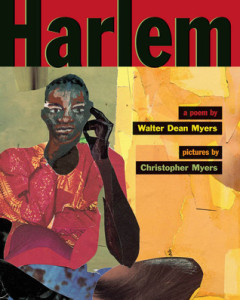March 28, 2017
E.Q: Connect the time period of the Harlem Renaissance to the period in the Great Gatsby.
Define connotation and denotation, and create examples.
Analyze Harlem Renaissance poetry.
Obj: I can connect the time period of the Harlem Renaissance to the period in the Great Gatsby.
I can define connotation and denotation, and create examples.
I can analyze Harlem Renaissance poetry.
Starter:
We will watch through the video once.
Then the second time write down all of the words.
Analyze the meaning of the video.
Vocabulary:
Word: Connotation
Part of Speech: noun
Dictionary Definition: an idea or feeling that a word invokes in addition to its literal or primary meaning.
Your definition:
Activity: Give an example of connotation from the video.
Word: Denotation
Part of Speech: noun
Dictionary Definition: the literal or primary meaning of a word, in contrast to the feelings or ideas that the word suggests.
Your Definition:
Activity: Give an example of denotation from the video.

Activity:
As you follow along with the picture book, consider what it would be like to live during the Harlem Renaissance. What would your life be like? What events would you witness? What would be your American Dream?

2. Analyzing Poetry
As a class, we will analyze From the Dark Tower
Use TPCASTT.
From The Dark Tower
We shall not always plant while others reap
The golden increment of bursting fruit,
Not always countenance, abject and mute,
That lesser men should hold their brothers cheap;
Not everlastingly while others sleep
Shall we beguile their limbs with mellow flute,
Not always bend to some more subtle brute;
We were not made to eternally weep.
The night whose sable breast relieves the stark,
White stars is no less lovely being dark,
And there are buds that cannot bloom at all
In light, but crumple, piteous, and fall;
So in the dark we hide the heart that bleeds,
And wait, and tend our agonizing seeds.

3. Analyzing Independently
Use TPCASTT to analyze Sympathy by Paul Laurence Dunbar
Sympathy
Related Poem Content Details
I know what the caged bird feels, alas!
When the sun is bright on the upland slopes;
When the wind stirs soft through the springing grass,
And the river flows like a stream of glass;
When the first bird sings and the first bud opes,
And the faint perfume from its chalice steals—
I know what the caged bird feels!
I know why the caged bird beats his wing
Till its blood is red on the cruel bars;
For he must fly back to his perch and cling
When he fain would be on the bough a-swing;
And a pain still throbs in the old, old scars
And they pulse again with a keener sting—
I know why he beats his wing!
I know why the caged bird sings, ah me,
When his wing is bruised and his bosom sore,—
When he beats his bars and he would be free;
It is not a carol of joy or glee,
But a prayer that he sends from his heart’s deep core,
But a plea, that upward to Heaven he flings—
I know why the caged bird sings!
Closure:
Using the learning target, how confident do you feel analyzing poetry?
Explain your reasoning.
No comments:
Post a Comment